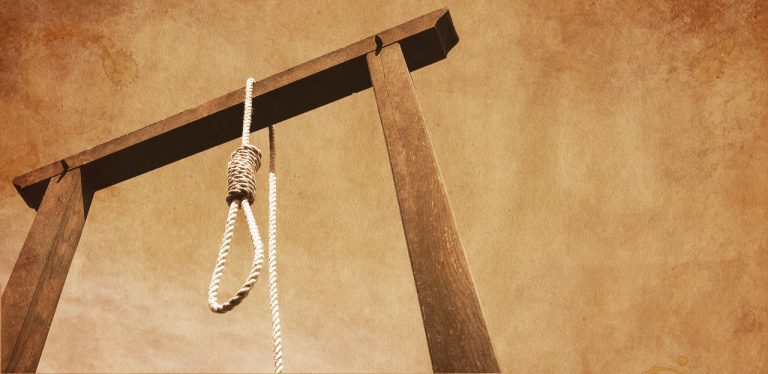Brief Summary of the Appin Murder
The chiefs and leaders of the clans, such as Ardsheal, were maintained in exile by what was known as the “second rent.” The estates of Ardsheal, Collart and Mamore had been forfeited and the usual rents were collected for the Crown by Colin Campbell of Glenure, who had been appointed factor. The arrangement was naturally unpopular, but the factor tried to make the best of it by using James Stewart (James of the Glen) as a go-between with the various tenants on the Ardsheal Estate. On 14th May, 1752, Colin Campbell of Glenure was murdered and two days later James of the Glen was arrested. His trial began in the Old Inveraray Courthouse on 21st September before three judges and a jury of fifteen, of whom eleven were Campbells, with the Duke of Argyll as Lord Justice-General presiding. The accused was found guilty and condemned to death. On 8th November, of the same year- a day which was so stormy and wild that many felt the elements were protesting against the deed-he was hanged at Cnap Chaolis Mhic Pharuig, near the slip at Ballachulish Ferry.
There seems no doubt that, in the words of Andrew Lang, “James Stewart, to speak plain words, was judicially murdered.” The political necessities of the times and the clan hatred of the Campbells against the Stewarts of Appin rigged a trial, packed the jury, and murdered an innocent man. There were, however, not a few including the man who was hanged, who knew the real culprit: and rarely in the history of human sacrifice has a secret been so well kept.
Colin Campbell of Glenure was eldest son of Patrick Campbell of Barcaldine, his mother being Lucia, daughter of Sir Ewan Cameron of Lochiel. As a Hanoverian, he fought against his own mother’s people in the ’45. While he was ambitious and thought to be planning the management of the forfeited estates for his own ultimate advantage, it must be allowed that he was in no ways oppressive in the execution of his distasteful and delicate duties as factor. James of the Glen helped him to collect the rents on the Stewart estates and they frequently consulted together.
Seumas a Ghlinne (James of the Glen) had been out in the ’45, had been pardoned, and returned to occupy his tenancy of Glen Duror. Here he remained until 1751, when he was removed to Acharn on the lands of Campbell of Airds. Glen Duror was given by the factor to another Campbell–Campbell of Bailveolan, Lismore. James Stewart had a relative, Allan Breck Stewart, whom he had brought up from childhood on the death of his parents. Allan Breck has been described as a ne’er-do-weel, who joined the Hanoverian Army before the ’45 and deserted to the Jacobites at Prestonpans. After Culloden he escaped to France and acted as a messenger between the Jacobites at home and those in exile. At the time of the murder of Colin Campbell he was in Appin, drinking and bragging a great deal, and threatening all kinds of mischief. He was particularly bitter against Campbell of Bailveolan, who had become tenant of Glen Duror in place of his fosterfather. There seems little doubt that Allan Breck stirred up a vengeful spirit amongst the young men, of whom Allan, the son of Seumas a Ghlinne, was prominent.
Glenure, the factor, had indicated that he had much less to fear from the Stewarts of Appin than from the Camerons. On 14th May, 1752, he was returning from a visit to- the Lochaber country, and when he got across Ballachulish Ferry he is supposed to have expressed his satisfaction in the words: “I am safe now that I am out of my mother’s country.” His party consisted of four others and they had “not a nail of arms among them.” As they were passing along the road at the wood of Lettermore, a shot was fired from a bush near at hand and Glenure was killed. Shortly after the murder, while James Stewart was standing at his home speaking to a friend, a horseman was seen approaching at great speed. James looked up and said, “Co sam bith am marca.’che cha tois fhein an t-eacw’ (“whoever the rider may be, the horse is not his own”). The man coming with such great urgency was MacKenzie, Glenure’s servant. When he told what happened, lames Stewart said prophetically, “Co sam bith an ciontach, is mise ,an crionlach” (“whoever may be the guilty one, I am the victim”).
Two days later Seumas a Ghlinne was arrested and while in prison at Fort William he was denied all facilities for preparing his defence. As happened, however, he was defended with considerable skill, but it was obvious that the trial was “an impudent mockery” and his fate was decided before it began. Sometime later a Campbell was taunted with the disgraceful justice meted out to lames Stewart. He replied proudly that anyone could get a guilty man hanged, but only MacCailein Mor could get an innocent man hanged.
Tradition holds that the condemned man, in addition to protesting his innocence in his last words on the scaffold, repeated the whole of Psalm xxxv. If this is true, the appropriateness of the words must have moved his friends deeply. Afterwards the Psalm is said to have been known as Salm Sheumais a Ghlinne (James of the Glen’s Psalm).
The hanging took place on 8th November, 1752. From that date until April, 1754 -a period of eighteen months -a guard watched day and night to prevent the body being taken down by relatives and friends. When the body began to disintegrate the bones of the skeleton were joined together with wire and replaced on the gibbet. In January, 1754, what remained was blown down by a great storm. An enquiry was instituted to discover the cause and it was placed in position once more. One story says that the mortal remains of Seumas a Ghlinne found rest at last through the action of a half-wit, Mac a Phi a Chuthaich (daft Macphee), who overthrew the gallows and cast it into the sea, whence it floated down Loch Linnhe and up Loch Etive, landing near Bonawe. The last use to which it was -put was to form part of a wooden bridge over a stream. The bones are supposed to have been carefully gathered by young Stewart of Ballachulish, who placed them in the same coffin with the body of the mournful widow. Ballachulish’s daughter, then about 10 years old, washed the skull of Seumas a Ghlinne with her own hands.
Of the 151 Crown witnesses at the trial, 36 were Stewarts, 26 McColls, 13 Campbells, 9 Colquhouns, 5 Macdonalds, and 2 Carmichaels. Amongst the Campbells was Bailveolain of Lismore. The most damaging witness against James Stewart was John Breck McColl, Bowman. He had been threatened by the relatives of the prisoner and asked the Crown authorities to have him arrested, so that his evidence would not appear voluntary and that he might seem to be under suspicion himself. Tradition says that Campbell of Bailveolain, who was involved in the case as a Campbell, as the tenant who took James Stewart’s farm of Glenduror, as a special object of Allan Breck’s enmity and threats, and as an active investigator of the crime, provided sanctuary for at least one of the Crown witnesses on his Lismore estate. The identity of this particular person is not certain.
Many years afterwards a young girl, Janet Macinnes, found in the hollow of a large elder tree an t-slinneachan (the shoulder piece), the gun from which death came to the factor. But who fired the fatal shot? The unanimous view of posterity is that James Stewart did not. The guilty person wished to confess, but was restrained by force by his own friends as well as those of the condemned man. Allan Breck, who was the evil genius of the unfortunate affair, accused Allan Beg, perhaps James Stewart’s eldest son. Others have held that young Stewart of Ballachulish was the man who put an t-slinneachan to his shoulder and fired the fatal shot en Thursday, 14th May, 1752. But the truth is that, though several knew, none has divulged the secret, and speculation only serves to cast reflections on the innocent.
“I am not afraid to die,” said Seumas a Ghlinne on the scaffold as he faced eternity, “but what grieves me is my character, that after ages should think me capable of such a horrid and barbarous murder.” His fears were groundless: “after ages” have declared him an innocent man.
Rev Ian Carmichael, DSO, MC




1 Comment
Well done on our history